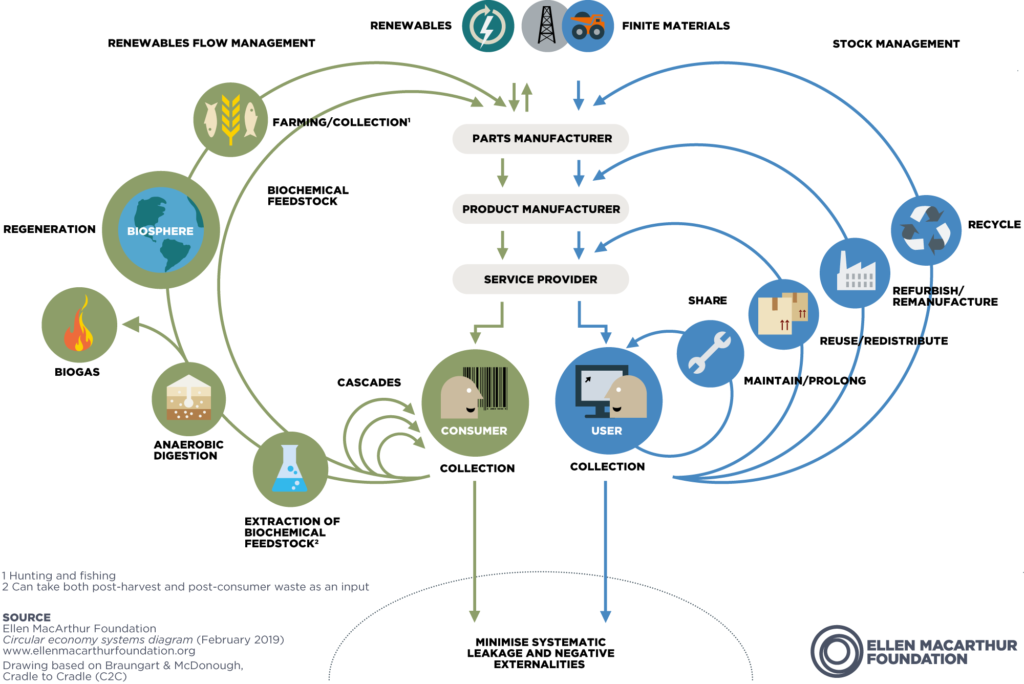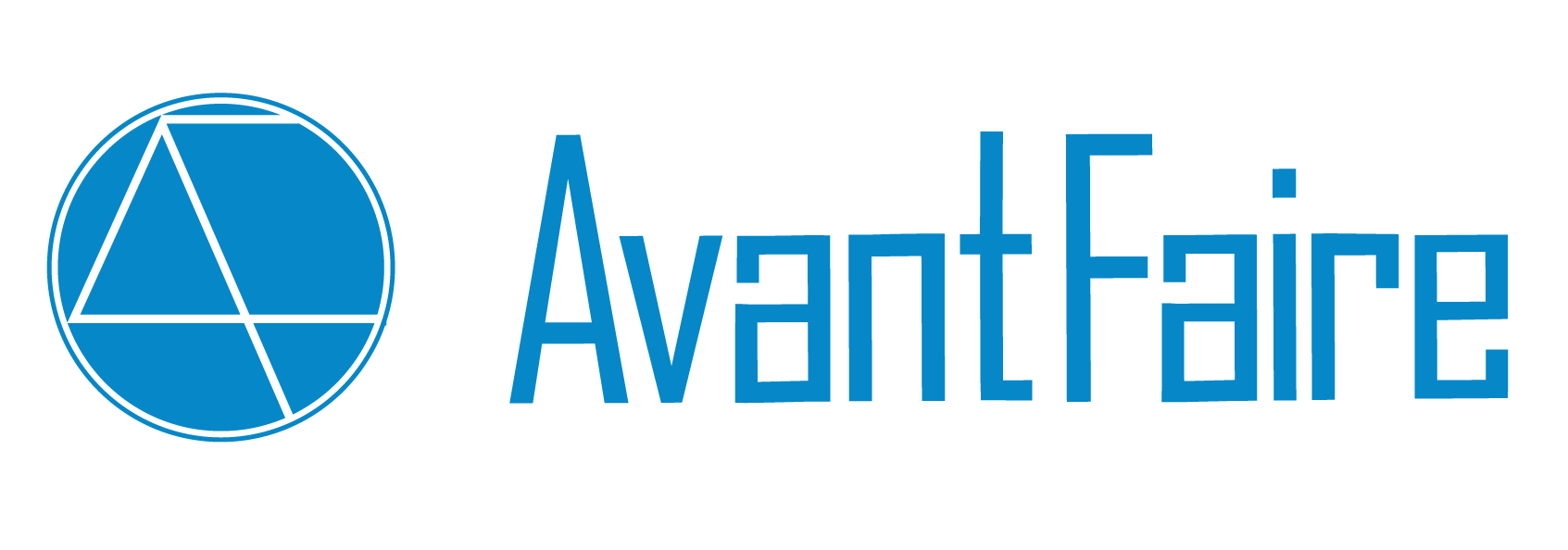(Picture: unsplash.com)
A little history
The linear model of production and consumption has been the status quo for the last 150 years, since the early days of industrialization. Raw materials are used to produce goods that are sold to consumers, who then use them and discard them. The waste is eventually eliminated in various ways (e.g. incinerated). It is obvious that this linear model of production and consumption is reaching its limits. The past few decades have witnessed the birth and growth of alternative production and consumption models challenging the status quo and advocating for improvements in how economies use resources, products, energy, and labor inputs.
“The circular economy provides a framework to both challenge and guide us as we rethink and redesign our future.”
The circular economy is an industrial system that is restorative or regenerative. It is based on superior design of materials, products, systems, and business models which aim to eliminate waste and replace the end-of-life concept. (Source: Ellen MacArthur Foundation)
Is there a need for a circular economy model?
There are remarkable economic benefits that come with transitioning to a circular economy business model, which are estimated at more than USD 1 trillion in material savings. By 2030, an additional three billion middle-class consumers will enter the global market, dramatically increasing the demand for goods and services. This calls for a complete rethink of how we use materials, as many of these materials are vital for industry and could be depleted within 5 to fifty years. Furthermore, if we maintain the current linear economy model price volatility will continue to surge because of the ever-increasing demand, along with the likely inflation of commodities (Source: WEF Report “Towards the circular economy”)
Why circular is better
The economic impact of the circular economy would be evident for business and consumers in both industrialized markets and fast-growing economies.
Global division of labor, specialization, and economies of scale are a central component of the 21st century globalized economy. Therefore, for a circular economic model to be a driver of innovation and value creation, it must be applicable at a global scale. (Source: WEF Report “Towards the circular economy”) This is indeed the case, and hereafter are some of the factors in support of this thesis:
- Wealth and employment generation despite resource constraints: circular business models create more value from each unit compared to linear models.
>Wealth creation: The materials saving potential alone is estimated at over USD 1 trillion dollars a year
>Employment creation: in the EU alone, 500,000 jobs are created by the recycling industry. A shift to circular economic activity would contribute to close the global job gap of 600 million by 2030 that is forecasted by the International Trade Union Confederation
- Linear models are not the optimal solution to ensure that raw materials are used in the most efficient manner (e.g. the only partial recycling of resources at the end of the cycle): a supply chain management approach that maximizes resource productivity globally is needed. The transition to global circular supply chains depends on addressing the challenges of geographic dispersion, materials complexity, and the current linear status of the industrial system.
- Land productivity and soil health: global land degradation generates USD 40 billion in costs per year, as well as a loss of biodiversity. The circular economy, by using processes like composting would move more biological material back into the soil, and reduce the need for replenishment with additional nutrients (i.e. pesticides). Returning nutrients to the soil will enhance the value of land and soil, increase land productivity, and produce less waste along the food value chain. ((Source: WEF Report “Towards the circular economy”; Source: Ellen MacArthur Foundation)

(Diagram: Ellen MacArthur Foundation)
Long-term benefits
The adoption of a circular economy leads to a more resilient economy. For instance, the increase in productivity of materials following the adoption of a circular economy would most likely have a positive impact on economic development, and the positive effects would spread beyond the specific sectors. Circularity is also a new way of thinking about labor market, supply chains, and use of resources, which can increase the rate of innovation, reduce dependency on resource markets, and reduce environmental ‘externality’ costs that are currently borne by society.
The circular economy could be a great opportunity for emerging market economies that are not as dependent on the linear model as advanced economies are. Emerging economies could leapfrog to circular manufacturing-based sectors. Emerging market economies are also more materials intensive than advanced economies: the relative savings from resulting from the adoption of circular business models would be even greater than the ones enjoyed by developed economies. (Source: WEF Report “Towards the circular economy”)
Scaling up the circular economy
The World Economic Forum in Davos addressed the question on how the circular economy could be scaled up. The answer was that the transition towards a globalized circular economy can only occur if multiple players across business and research come together, supported by policymakers and investors. No single player can make this happen on their own.
The power of partnerships
At AvantFaire we believe that this statement made by thought leaders in the field stresses once again the power of the United Nations Sustainable Development Goal (UN SDG) 17, “Partnerships for the Goals”. Reaching out, connecting, and partnering with like-minded individuals and institutions is crucial to make change happen. Creating partnerships and awareness are the reason why our founder 陈钦若, in her role as chair of the Education Steering Committee of Women in Finance Asia, moderated a lively panel discussion on Sustainable and Circular Fashion, which is based upon and closely linked to the concept of circular economy. The event brought together women operating in Corporate and Community Sustainability (such as Karen Ho from WWF) and the fashion community (namely Kay Liu from Redress, Jennifer Tam from Chicks Lifestyle, Kay Wong from Fashion Clinic and Tomorrow by Daydream Nation). The discussion revolved around the role of sustainability in fashion. It raised awareness around the topic of waste in the industry and offered insights on how fashion could transition to a more sustainable future. More on this in our next post!
Please share your thoughts on this in the comments section of our LinkedIn post!

